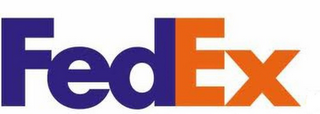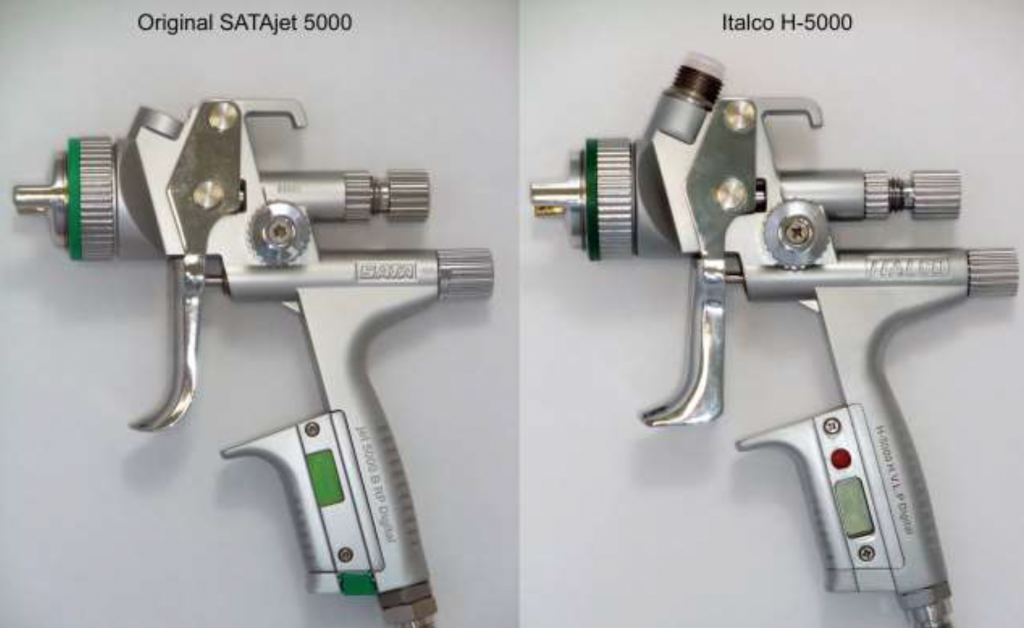 SATA GmbH sued Discount Auto Body and Paint Supply LLC for infringing its product design trademarks in the alleged sale of paint spray guns. SATA GmbH & Co. KG v. Discount Auto Body and Paint Supply LLC, No. 2-17-cv-03101 (D.N.V. 2017).
SATA GmbH sued Discount Auto Body and Paint Supply LLC for infringing its product design trademarks in the alleged sale of paint spray guns. SATA GmbH & Co. KG v. Discount Auto Body and Paint Supply LLC, No. 2-17-cv-03101 (D.N.V. 2017).
This case demonstrates that it is possible not only to obtain trademark protection in a product design comprising a single color applied to an area of the product, but also on any color applied to an area of a product. In other words, the use of any color on an area of a product can itself act as a trademark, indicating a source of goods and/or services.
One of the trademark SATA asserted was U.S. Trademark Registration No. 2,770,801 for a design mark of “a green band of color extended around the circumference of a paint spray gun air cap ring, the green band being narrower than the air cap ring…The drawing is lined for the color green.” The drawing of the mark is:
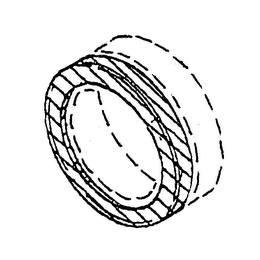
SATA also asserted U.S. Trademark Registration No. 2,793,583 for to a design mark of “a band of [any] color extended around the circumference of a paint spray gun air cap ring, the color band being narrower than the air cap ring and of a color that contrasts with the air cap ring.” The drawing of the mark is:
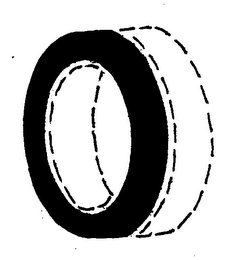
Therefore, the first trademark registration is directed to a green ring on a paint spray gun. But the second trademark is directed to a ring of any color, as long as that color contrasts with the air cap ring.
Below is a photo of the green ring deployed on SATA’s actual product.
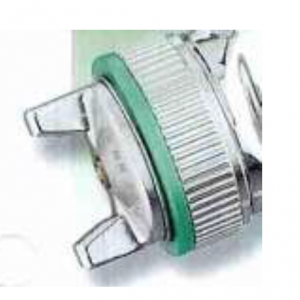
The principle of allowing the registration of multi-color design marks appears to be first addressed in a 1972 case where Data Packaging Corp. applied to register a design applied to a computer tape reels. In re Data Packaging Corp., 453 F.2d 1300, 1302 (CCPA 1972). The claimed design was to “a narrow annular band mounted on the front reel flange, adjacent to and concentric with the hub of the reel, in a color which contrasts with the reel flange.” The USPTO refused registration asserting that the law prohibited the registration of a mark which provided for the use of any color as its distinguishing feature.
The court of appeals rejected that view and reversed the USPTO. The court concluded that “there is no reason why an applicant should not be able to obtain a single registration of a design mark covering all the different colors in which it may appear, that is to say, not limited to a particular color.”
The SATA case is only at the complaint stage so we don’t have any rulings with respect to SATA’s marks. Nevertheless, the plead registrations demonstrate a multi-color design trademark registration.
